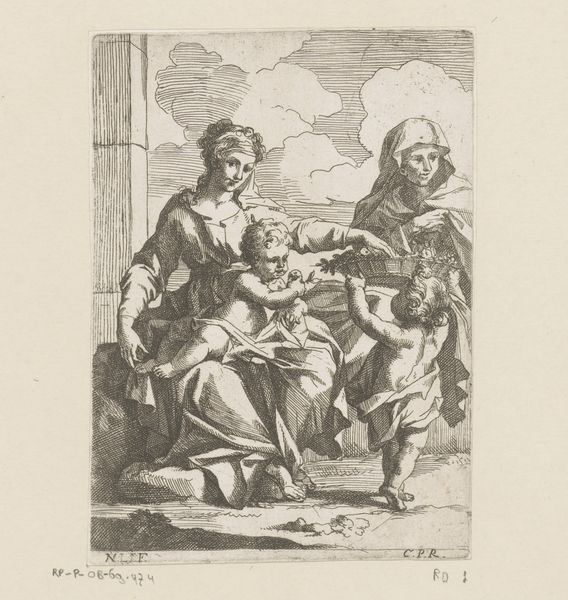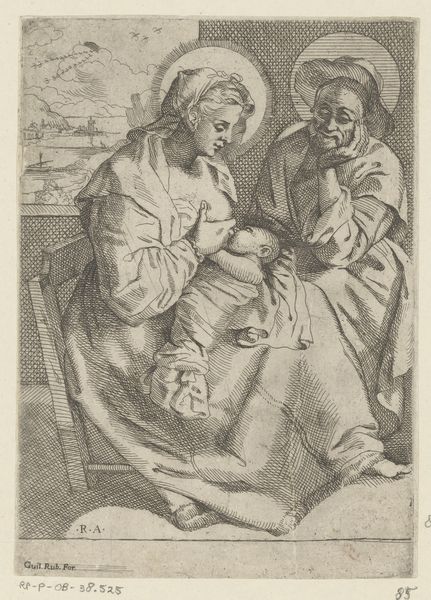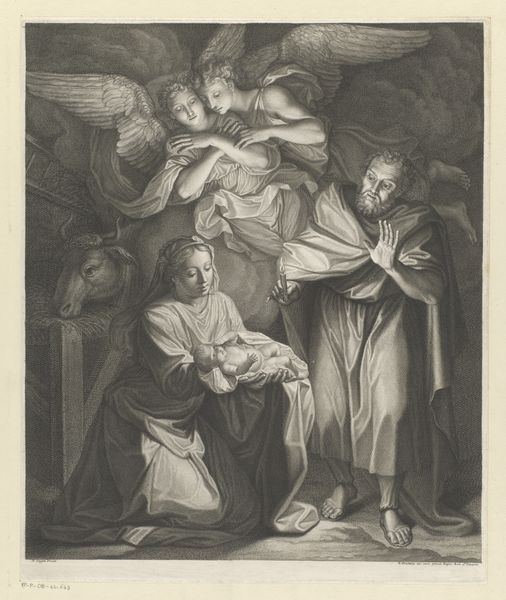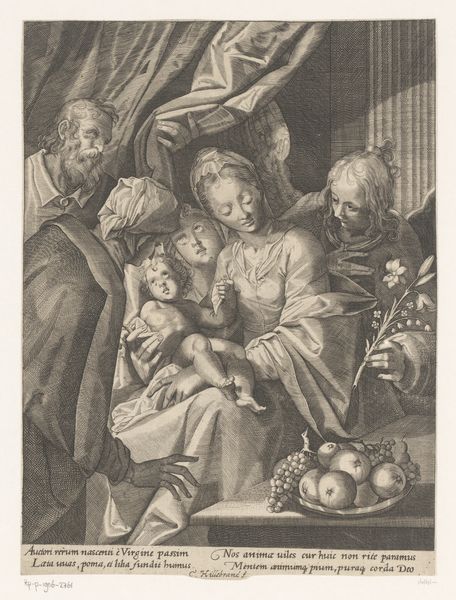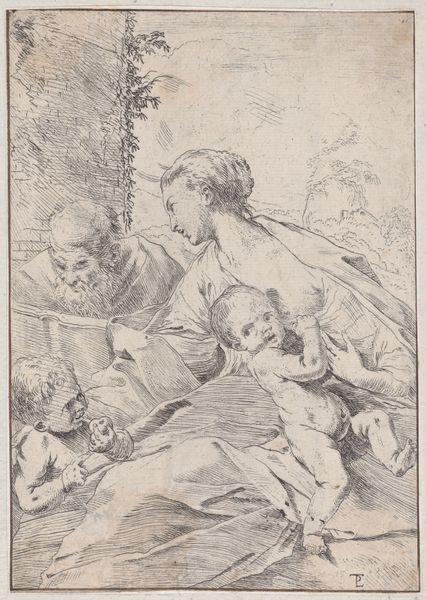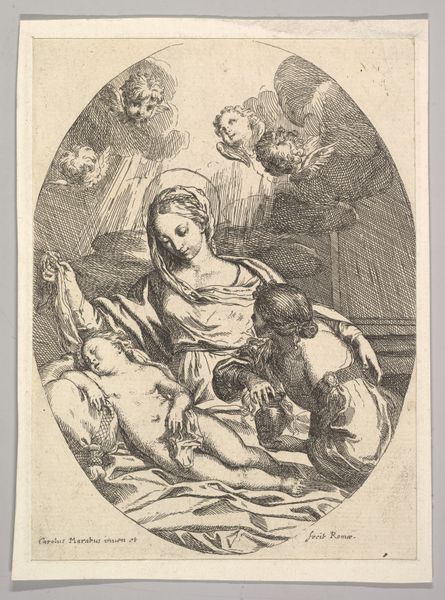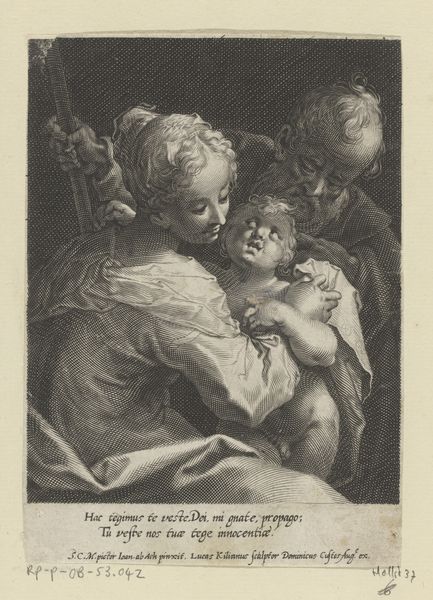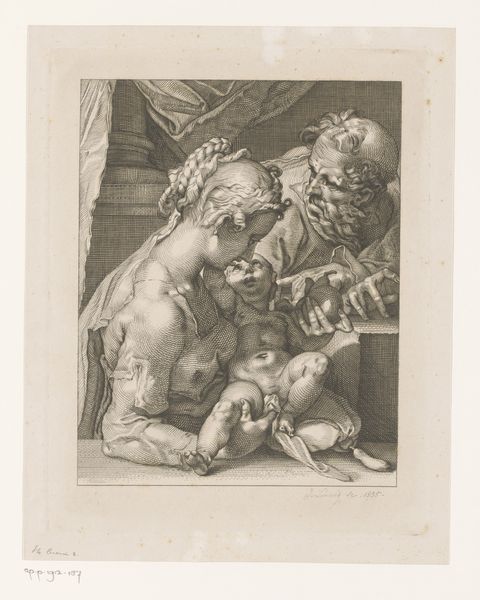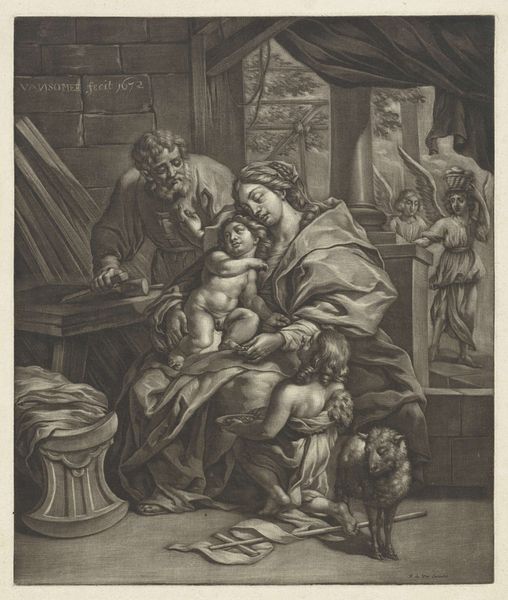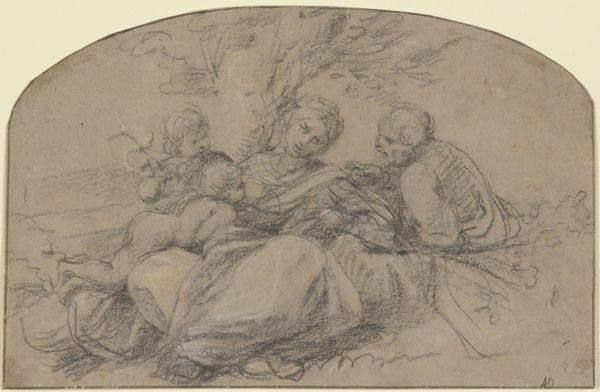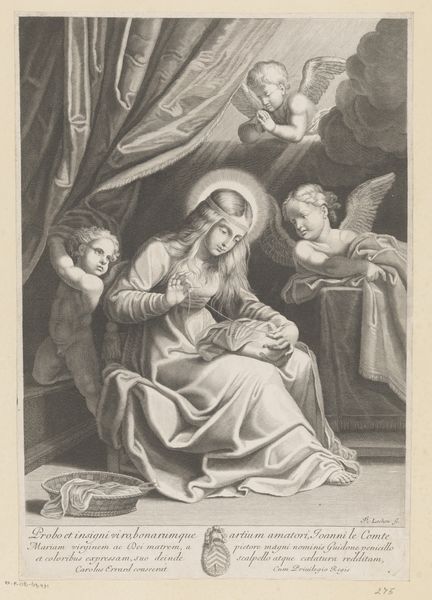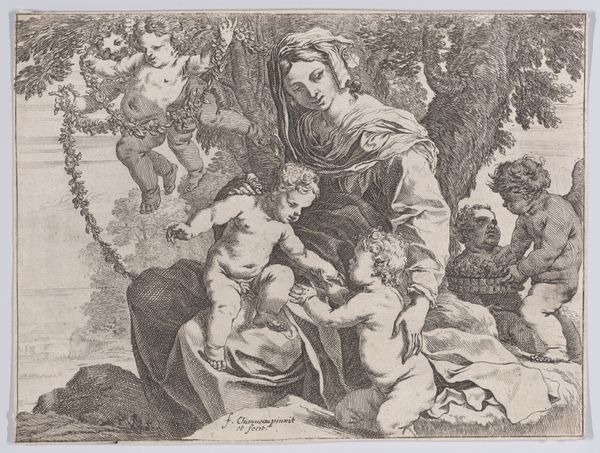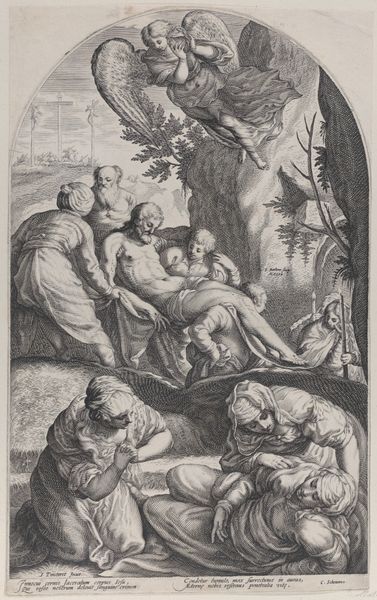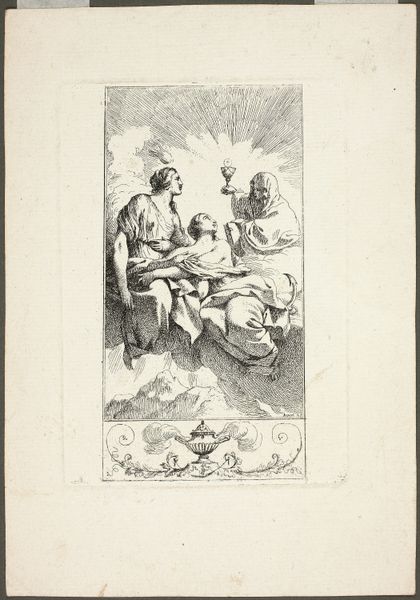
drawing, print, engraving
#
drawing
#
baroque
# print
#
figuration
#
history-painting
#
engraving
Dimensions: Sheet: 7 3/4 × 7 1/2 in. (19.7 × 19.1 cm)
Copyright: Public Domain
Curator: The engraving, "The Holy Family, in a circle", dating from between 1640 and 1660, captures a domestic scene. It's currently housed in the Metropolitan Museum of Art. Editor: It’s stark. The starkness highlights a moment of human tenderness, almost vulnerable. You can feel the crispness of the paper through the detail on the forms of the three figures in the roundel. Curator: This work speaks volumes about the evolving representation of familial and religious ideals within the context of Baroque sensibilities. The deliberate framing within a circle, a Renaissance motif, serves to contain and elevate the Holy Family. Considering power structures of the time, how do you interpret their postures, gazes? Editor: Considering it’s an engraving, one must consider the role of labor involved in such print-making during this era. Notice the mark making: fine cross-hatching builds form out of minute marks. These prints also democratized imagery to an extent – a potentially radical tool. How does that accessibility play into the context of power and visibility you were referencing? Curator: That's an excellent point about democratization, which allows for the propagation of ideological messaging across social strata, right? This brings into sharp focus how the performative aspects of domestic virtue and piety were disseminated and consumed during that time period. And beyond the family...the depiction here, while centered around religious figures, certainly speaks to a specific socio-economic context. How might interpretations shift if viewed through lenses of class or gender? Editor: Absolutely. Furthermore, let’s talk of its making—its scale suggests it was handled and circulated among many hands. The tactile, circulated nature of it is vital to its purpose, a portable icon of faith but also domesticity in a new stage of globalism in trade. The reproduction and consumption become inextricable. Curator: Absolutely. The interplay between material culture, religious propaganda and identity constructs deserves greater attention. The engraving’s power to promote and perform family is a compelling element of this work. Editor: I concur—recognizing the complex exchange between process, imagery, and social exchange deepens our insight to the history of the domestic as well.
Comments
No comments
Be the first to comment and join the conversation on the ultimate creative platform.
